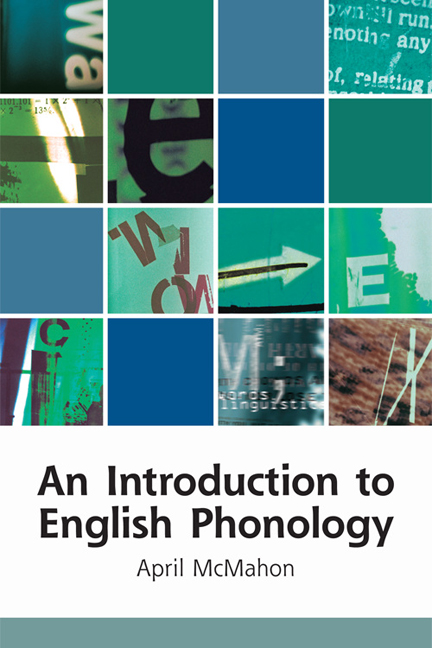Book contents
- Frontmatter
- Contents
- To colleagues
- 1 Sounds, spellings and symbols
- 2 The phoneme: the same but different
- 3 Describing English consonants
- 4 Defining distributions: consonant allophones
- 5 Criteria for contrast: the phoneme system
- 6 Describing vowels
- 7 Vowel phonemes
- 8 Variation between accents
- 9 Syllables
- 10 The word and above
- Discussion of the exercises
- References
- Index
10 - The word and above
Published online by Cambridge University Press: 13 October 2018
- Frontmatter
- Contents
- To colleagues
- 1 Sounds, spellings and symbols
- 2 The phoneme: the same but different
- 3 Describing English consonants
- 4 Defining distributions: consonant allophones
- 5 Criteria for contrast: the phoneme system
- 6 Describing vowels
- 7 Vowel phonemes
- 8 Variation between accents
- 9 Syllables
- 10 The word and above
- Discussion of the exercises
- References
- Index
Summary
Phonological units above the syllable
Native speakers who are not linguists may be slightly surprised by the discovery, discussed in the last chapter, that they can count syllables and determine the boundaries between them. However, they will typically be much more consciously aware of the word as a linguistic unit, probably because words are meaningful units; moreover, in a highly literate society, we are familiar with orthographic words, which conveniently appear with white space on each side. Individual spoken or written words can also appear in isolation: three of the four conversational turns in (1) consist, entirely appropriately and comprehensibly, of single words.
(1) A: Did you find a babysitter?
B: Yes.
A: Who?
B: Denise.
However, words, like other linguistic units, are not entirely straightforward and trouble-free for native speakers or for linguists. In particular, there are cases where it is difficult to determine how many words we are dealing with. For example, is washing-machine one word or two? Is it easier or more difficult to decide if we write it as washing machine, without the hyphen? And if we conclude that this is two words, then where does that leave teapot, where two acceptable independent words seem to make up one larger one? It seems that compounds like this take some time to become accepted in the speech community as single words: for a while, they appear as two written words, though signalling one distinct concept semantically (thus, a washing-machine washes clothes, not dishes, for which we have dishwashers, or cars, which go through a carwash). As they are encountered more commonly, they begin to be written with a hyphen, which ultimately drops to leave a single orthographic word – although speakers may think of a compound as a single word before this stage is reached. Conversely, although didn't, can't or it's appear as single written words, speakers will tend to regard these as sequences of two words, contracted by the deletion of a vowel, as signalled by the apostrophe. So, it's (in It's Saturday) is a short form of it is, and therefore in a sense two words, as distinct from its (in The cat ate its dinner), which is a single word however you look at it.
- Type
- Chapter
- Information
- An Introduction to English Phonology , pp. 117 - 132Publisher: Edinburgh University PressPrint publication year: 2016



